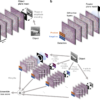For decades, researchers have explored how electrons behave in quantum materials. Under certain conditions, electrons interact strongly with each other instead of moving independently, leading to exotic quantum states. One such state, first proposed by Nobel laureate Eugene Wigner, is the Wigner crystal—a structured electron arrangement caused by their mutual repulsion. Although widely theorized, experimental proof has been rare.
Researchers at Yonsei University have now provided evidence of Wigner crystallization and the associated electronic rotons. In a study published in the journal Nature, Prof. Keun Su Kim and his team used angle-resolved photoemission spectroscopy (ARPES) to analyze black phosphorus doped with alkali metals. Their data revealed aperiodic energy variations, a hallmark of electronic rotons.
Crucially, as they decreased the dopant density within the material, the roton energy gap shrank to zero. This observation confirmed a transition from a fluid-like quantum state to a structured electron lattice, characteristic of Wigner crystallization.
“Electrons are known to behave like waves, moving freely in solids. However, Wigner proposed that at low densities, strong repulsion between electrons could immobilize them into a crystal-like structure. Here, we identified flakes of such Wigner crystals by detecting anomalously aperiodic signals in ARPES data from alkali metals on black phosphorus,” explains Prof. Kim, senior researcher of the study.
The researchers found that the energy patterns of the electrons were irregular, showing a dip at a certain momentum. This irregular pattern, not seen in regular crystalline solids, strongly indicated the presence of electronic rotons. By looking at how the electrons were arranged, using a technique called structure factor analysis, the team confirmed that the electrons had a short-range order, which is important for forming these Wigner crystals.
Using structure factor analysis, the researchers found that as the Wigner crystal formed, the electrons became more evenly spaced. This showed that tiny, ordered groups of electrons—like mini-crystals—were forming within the material.
This discovery is a major step in understanding how electrons behave in strongly correlated systems. The Wigner crystal has been proposed as a key to understanding the mechanism of high-temperature superconductivity and superfluidity.
“Once we can understand high-temperature superconductivity, it will totally change our real life. Phones and computers will never overheat no matter how long one uses them. There will be no energy loss in electricity transmission, lowering energy costs. Lastly, we will see revolutionary changes in transportation, like magnetic levitation trains becoming more affordable,” says Prof. Kim.
While this study focuses on fundamental physics, its implications extend far beyond. By deepening our understanding of quantum materials, this work moves us closer to one day achieving room-temperature superconductors, which could transform energy, electronics, and transportation.
More information:
Soobin Park et al, Electronic rotons and Wigner crystallites in a two-dimensional dipole liquid, Nature (2024). DOI: 10.1038/s41586-024-08045-0
Provided by
Yonsei University
Citation:
Elusive electronic rotons, detected for first time, reveal formation of Wigner crystallites in 2D electron liquid (2025, March 26)


